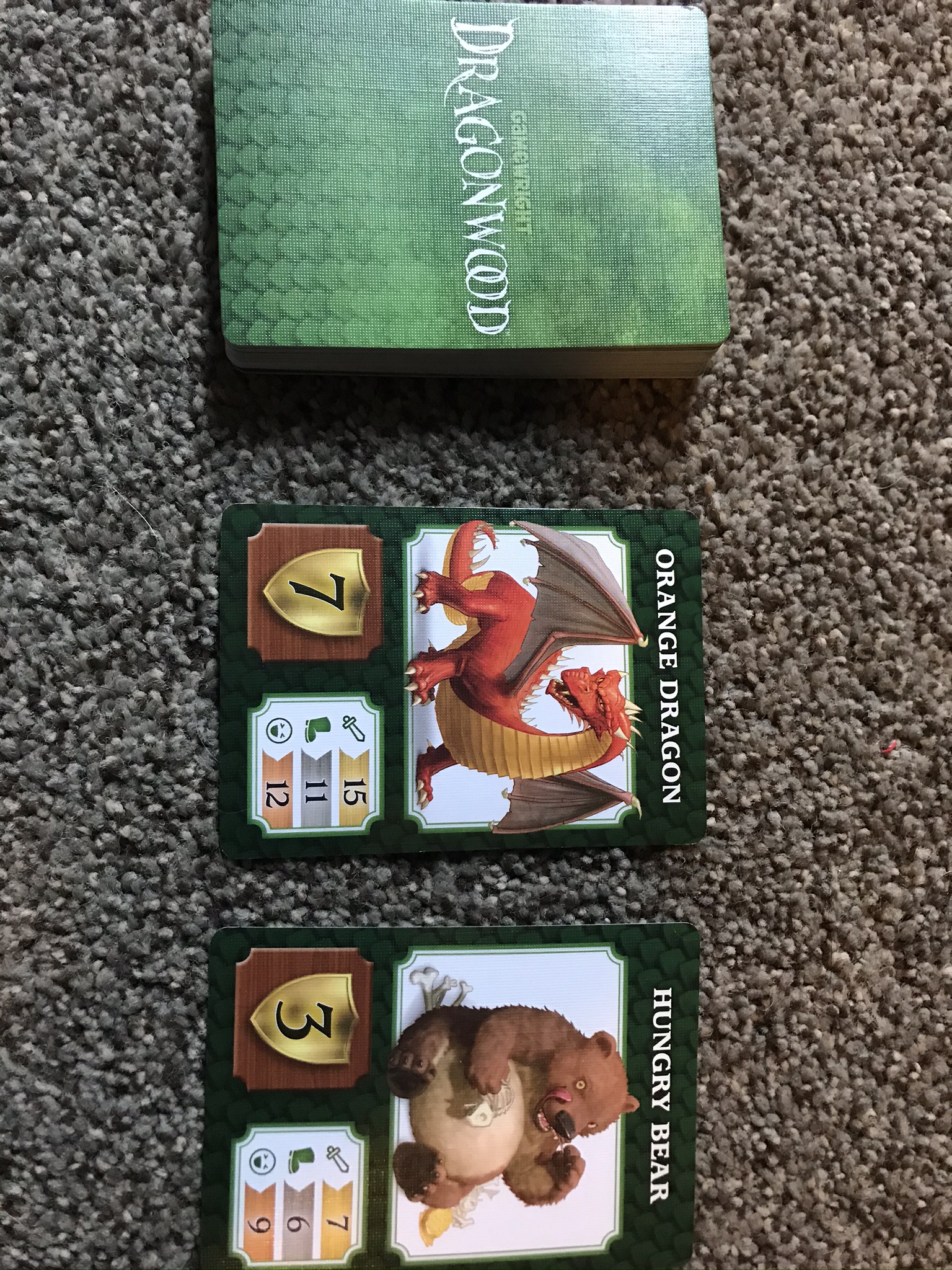
If I could calculate the hours played for all of our games combined, the sum would not come close to the number of hours my children and I have spent playing Dragonwood. Six dice and 106 cards of pure joy in a tiny box, Dragonwood completely captured my children’s attention and adoration right from the first time they played.
To play, 42 green-backed Dragonwood cards are sorted until the two dragon cards are found. These are removed and placed aside, then the rest of the deck is shuffled. Based on the number of players, a certain number of cards are removed from the deck. The deck is then halved and the dragon cards are shuffled back into the bottom half before the two portions of the deck are placed together to create a full deck. This is probably the most complex portion of the game, and it’s mainly to ensure that the dragon cards are at the bottom of the deck.

Five cards are placed face-up from the Dragonwood deck so that all players can see them. These cards consist of either creatures or enchantments that the players can capture or events that occur immediately and impact the gameplay for all players. The red-backed Adventurer cards are then shuffled. Each player receives 5 Adventurer cards, which are hidden from other players. Starting player is the last to have gone for a hike in the woods (I just love games with creative starting player rules!).
Players can complete one of two actions on their turn. They may either Reload by drawing a new card for their hand or Capture one of the exposed Dragonwood cards. No player can have more than 9 cards in their hand, excluding enchantments captured from the Dragonwood cards.

The box proclaims that this is “a game of dice and daring”, and, so far, I’ve spent a lot of time describing the cards. Players use the cards in their hands to capture the Dragonwood cards using dice. This mechanic is super fun and is really the heart and soul of why my family loves Dragonwood. You can choose one of three attacks: Strike, Stomp or Scream. In strike, you play cards in a numeric row (i.e., 5, 6, 7). To stomp, you play cards that are the same number. To scream, you play cards that are the same colour. The number of cards you play from your hand dictates how many dice you get to use. If you’re able to play 4 cards, you get 4 dice. If you’re able to play 2 cards, you get 2 dice, and so on.

Although the dice are six-sided, each one only goes up to the number 4. Each Dragonwood card has the three categories of attacks listed with a number so that players know how difficult that card is to capture, and each creature card has a number of points that it grants the player who captures it (enchantments don’t grant points but may make capturing cards easier by granting bonuses).
With games that I play with children, I like to sneak a little bit of academics in there. Dragonwood is all about the sneaky math! With basic counting skills and simple addition at the core of gameplay, my youngest was learning and didn’t even realise it. Even without this added bonus, though, Dragonwood whoops a surprisingly enjoyable punch. My family gets very competitive over it, with different people going for the same cards in different ways. We laugh a lot and we yell a lot (in a good way) over this game. It takes up very little space, which allows it to be played nearly anywhere.

When I’ve asked around, I don’t know very many people who have heard of Dragonwood, which is a shame. This is a wonderful little game that more people should try, particularly those who game with kids 8-12.
